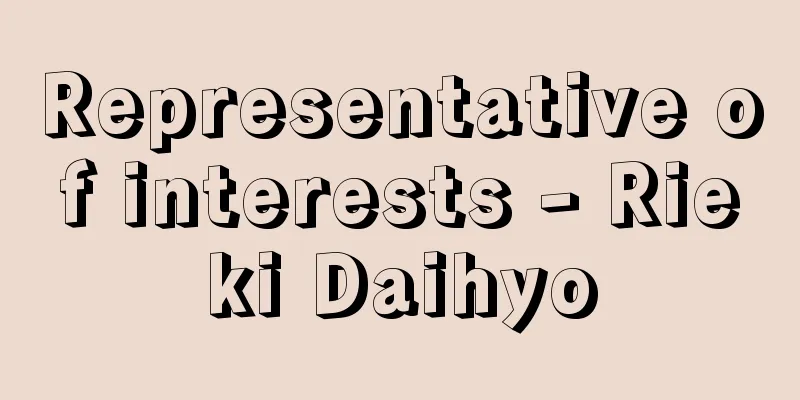Ticket issuing system - Hakkenseido (English notation) note issuing system

|
Historically, there are two systems for issuing banknotes: decentralized and centralized. The first banknotes were issued by a number of private banks under the decentralized system. Banknotes at that time were issued by bankers and circulated locally as promissory notes to be paid at sight, but they gradually expanded their range of circulation and increased in power, and came to be used in place of commercial bills. Furthermore, issuing banks must hold the reserves necessary to meet payment obligations, but as capitalist economies developed, they were unable to hold sufficient reserves. For this reason, many countries established central banks, concentrated the issuance of banknotes in the central bank, and gave them legal tender power. This is centralized. When banknotes are concentrated in the central bank, the state must impose restrictions on the preparation and issuance of banknotes by law. This mechanism for issuing banknotes is the issuance system. The modern note-issuing system began with the Peel Banking Act of 1844. This act transformed the Bank of England into a central bank, and gradually absorbed the note-issuing rights held by many private banks. The note issuing system developed along with the debate (the monetary debate) between monetarism, which held that the amount of banknote issuance should be limited by the amount of specie reserves held, and bankerism, which did not distinguish between specie reserves and guaranteed reserves and left it to the banks' discretion, allowing flexibility in the amount of note issuance. The ticketing systems can be categorized as follows: (1) Full Specie Reserve System This is the ideal issuance system of monetarism, which requires a specie reserve of the same amount as the banknotes issued. This system is suitable for stabilizing the value of the currency, but it is not flexible and is not realistic. (2) Direct Limitation of Guaranteed Issuance This is the system adopted by the Peel Bank Act, and like the full specie reserve system, it is based on the monetarism principle. Instead of specie reserves, this system sets a limit on the amount that can be issued using guaranteed reserve assets such as commercial bills, and any issuance beyond this amount requires the same amount of specie reserves. (3) Guaranteed issue flexibility limit system The guaranteed issue indirect limitation system is an intermediate system between the monetary principle and the banking principle. This system includes the guaranteed issue flexibility limit system and the proportional reserve system. The guaranteed issue flexibility limit system allows issuance using guaranteed reserves in addition to specie reserves up to a certain limit, and if necessary, allows issuance outside the limit by attaching certain conditions to the issuance period and issuance tax. (4) Proportional Reserve System: This system indirectly limits guaranteed issuance by requiring a certain ratio of specie reserves to the total amount of issuance (for example, one-third of the total amount). (5) Maximum Issuance Limit System This system does not distinguish between specie reserves and guaranteed reserves, but sets a maximum limit on the amount of issuance. It is based on the banking principle, and issues banks are allowed a great deal of discretion. Japan has had this system since 1941 (Showa 16), but the maximum limit was abolished by the amendment of the Bank of Japan Act in April 1998 (Heisei 10), and issues are now left to the discretion of the banks. [Yasuda Genzo] "Introduction to Financial Theory, by Shigeru Yamaguchi (1958, Seirin Shoin Shinsha)" ▽ "Lectures on Financial Theory, Vol. 1, edited by Hiroshi Kawaguchi and Ichiro Kawai (1964, Yuhikaku)" ▽ "Guidelines for Financial Reform, by Akio Kuroda (1997, Toyo Keizai Shinposha)" ▽ "The New Bank of Japan, by Takeshi Kanegae (1999, Keiso Shobo)" [References] | | | | |Source: Shogakukan Encyclopedia Nipponica About Encyclopedia Nipponica Information | Legend |
|
銀行券の発行制度は、歴史的には分散主義と集中主義とがある。初めの銀行券発行は分散主義であって、多くの民間銀行によって行われた。この当時の銀行券は、銀行業者の発行した一覧払いの約束手形として地域的に流通したが、しだいに流通範囲を拡大して流通力を増し、商業手形にかわって使用されるようになった。しかも、発券銀行は支払債務を履行するのに必要な準備金を保有しなければならないが、資本主義経済が発展するにつれて、十分な準備を保有することはできなかった。そのため、多くの国は中央銀行を設立して、銀行券の発行を中央銀行に集中させ、強制通用力を賦与させることになった。これが集中主義である。このように、中央銀行に集中されると、国家は、法律によって銀行券の準備や発行額に規制を加えることになる。この銀行券発行の仕組みが発券制度である。 近代の発券制度の始まりは、1844年のイギリスのピール銀行条例である。この条例によってイングランド銀行は中央銀行に転化され、多くの民間銀行がもっていた銀行券発行権を漸次吸収することになった。 発券制度は、銀行券発行額が正貨準備の保有額によって制限されるべきだとする通貨主義と、正貨準備と保証準備とを区別しないで銀行の自由裁量に任せ、発行額に弾力性をもたそうとする銀行主義との論争(通貨論争)とともに発達してきた。 発券制度を分類すると、次のようになる。 (1)全額正貨準備制度 通貨主義の理想とする発券制度で、発行された銀行券と同額の正貨準備を必要とする。この制度は、通貨価値の安定のためには適しているが、弾力性に欠け現実的ではない。 (2)保証発行直接制限制度 ピール銀行条例によって採用された制度がこれであり、全額正貨準備制度と同じく通貨主義に基づく制度である。正貨準備でなく、商業手形などの保証準備資産によって発行される額にはあらかじめ限度を定め、それ以上の発行には同一額の正貨準備を必要とする制度である。 (3)保証発行屈伸制限制度 通貨主義と銀行主義の中間の制度として保証発行間接制限制度がある。これには保証発行屈伸制限制度と比例準備制度とが含まれる。保証発行屈伸制限制度は、正貨準備のほか保証準備による発行を一定限度まで認め、なお必要があれば制限外発行を発行期間や発行税に一定条件をつけて認める制度である。 (4)比例準備制度 発行総額の一定比率の正貨準備(たとえば3分の1準備など)を必要として、保証発行を間接的に正貨準備で制限する制度である。 (5)最高発行額制限制度 正貨準備と保証準備とを区別しないで、発行額に最高限度を設定する制度である。銀行主義に基づくもので、発券銀行の自由裁量が大幅に認められている。日本は1941年(昭和16)からこの制度をとってきたが、98年(平成10)4月の日本銀行法改正によって最高限度が廃止され、発券銀行の自由裁量に任されている。 [安田原三] 『山口茂著『金融論入門』(1958・青林書院新社)』▽『川口弘・川合一郎編『金融論講座 第1巻』(1964・有斐閣)』▽『黒田晁生著『金融改革への指針』(1997・東洋経済新報社)』▽『鐘ヶ江毅著『新しい日本銀行』(1999・勁草書房)』 [参照項目] | | | | |出典 小学館 日本大百科全書(ニッポニカ)日本大百科全書(ニッポニカ)について 情報 | 凡例 |
Recommend
Ladder - ladder
A tool for climbing to high places. Depending on ...
Stable - Kyusha
1. A shed for keeping cows and horses. 2. In horse...
Base material - Soji
〘 noun 〙 (also "sochi") 1. The original ...
Seasonal calendar - Saijiki
Also written as saijiki. A collection of seasonal ...
Public Nuisance Removal Act
…Based on this report, the central government tri...
Sant'Apollinare in Classe (English spelling)
…The mosaics of Justinian and his attendants, and...
"Golden Crows and Rabbits Collection"
...A priest and onmyoji from the mid-Heian period...
Alcohol-related problems
...Mental and physical disorders caused by alcoho...
Pohnpei Island
...Belongs to the Federated States of Micronesia....
Cerro Sechín
Located in the Casma Valley on the north coast of ...
inclined shaft
...The latter is called a blind shaft, but in thi...
Puvva
…The two sects have different scriptures. Accordi...
Jubokudo - Jubokudo
Another name for calligraphy. Iriki was used to d...
Sāqiya al-Ḥamrā' (English spelling) Saqiya al Hamra
The Western Sahara is a region of the Sahara, wit...
Dorylus
…General term for ants belonging to the family Fo...









